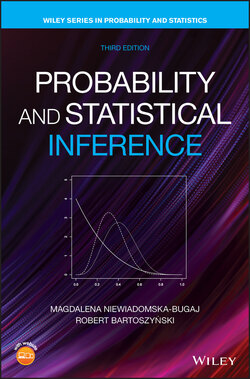Читать книгу Probability and Statistical Inference - Robert Bartoszynski - Страница 47
2.3 Axioms of Probability
ОглавлениеLet be the sample space, namely the set of all outcomes of an experiment. Formally, probability, to be denoted by , is a function defined on the class of all events,1 satisfying the following conditions (usually referred to as axioms):
Axiom 1 (Nonnegativity):
Axiom 2 (Norming):
Axiom 3 (Countable Additivity):
for every sequence of pairwise disjoint events (such that for all ).
If the sample space is finite or countable, one can define a probability function as follows: Let be a nonnegative function defined on , satisfying the condition . Then, may be defined for every subset of as . One can easily check that satisfies all three axioms.
Indeed, because is nonnegative, and . Finally, let be a sequence of disjoint subsets of . Then,
Passing from the first to the second line is allowed because are disjoint, so each term appears only once. The sum in the second line is well defined (i.e., it does not depend on the order of summation because the terms are nonnegative).
However, if is not countable, one usually needs to replace summation by integration, . This imposes some conditions on functions and on the class of events . For a detailed discussion, the reader is referred to more advanced probability texts (e.g., Chung, 2001).
Figure 2.1 Hitting a target.
